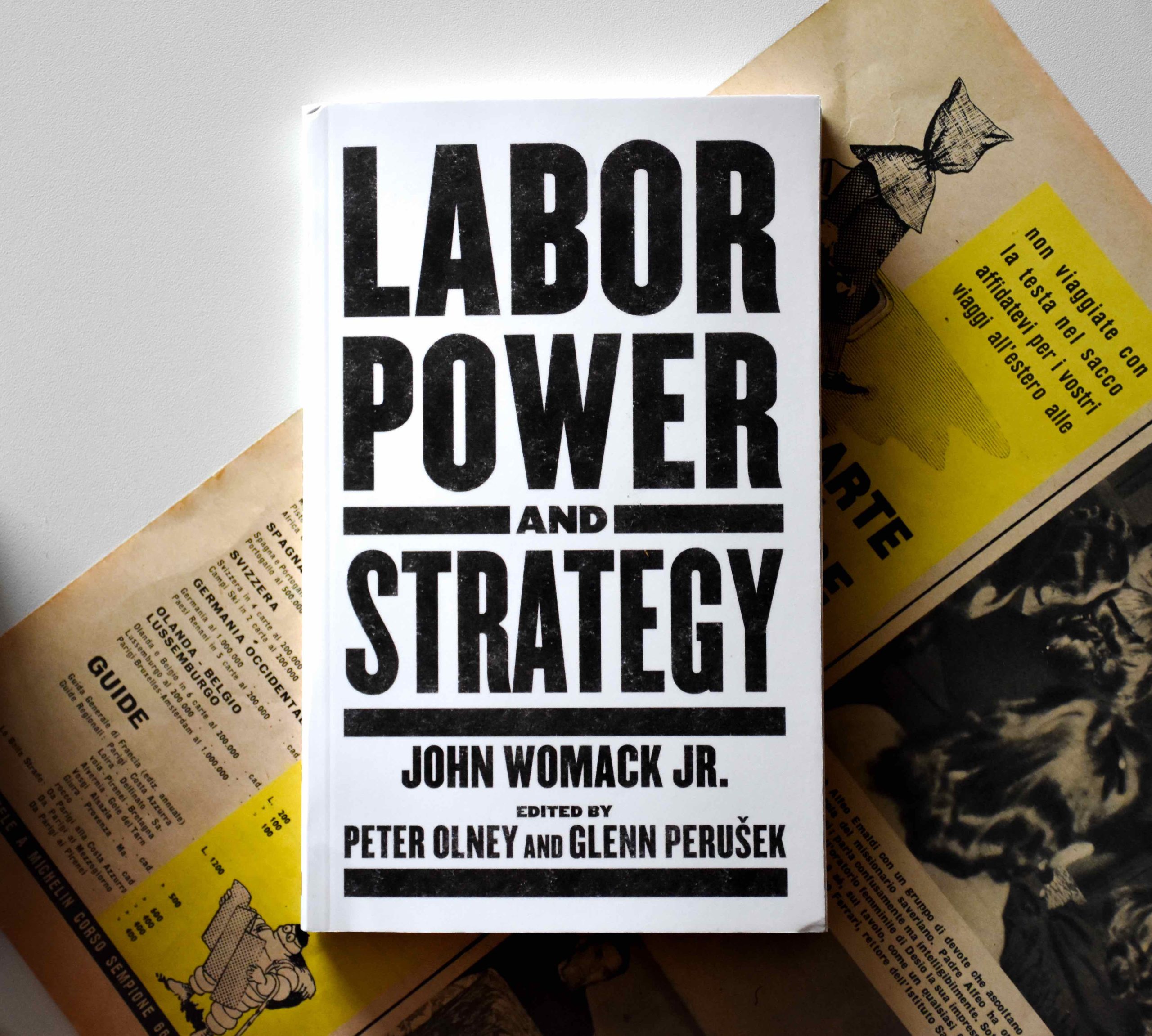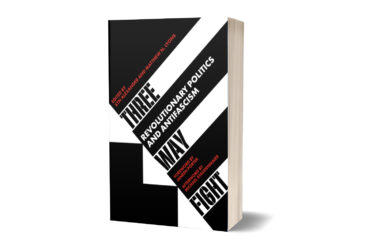Introduction
The 2023 book Labour Power and Strategy, edited by Peter Olney and Glenn Perušek, is centred around a lengthy interview with labour organiser and historian John Womack Jr in which he argues for the importance of ‘strategic workplace organising’. During the discussion he contends:
No matter what workers are mad about, unhappy about, indignant about, feel abused about, it doesn’t matter until they can actually get real leverage over production, the leverage to make their struggle effective… without that material power your struggle won’t get you very far for long. – John Womack
Further to this Womack calls for organisation and action to focus on critical ‘choke points’ or ‘seams’ within economies, reasoning that:
Wherever things connect, that’s where they’re materially weakest, maybe politically, legally, commercially, culturally strong, protected, defended, but technically weakest. Follow the admirable Peter Roth’s principle: “If you build it, it can fail.” And materially it will fail in certain places, or along them. It’s hard to tear fabric woven whole, like Christ’s cloak, all of one piece; it’s much easier to tear it where there’s a seam.
In seeking to identify where Twenty First century movements can best generate and deploy the power needed to transform existing economic relationships and inequalities, the book features responses from ten activists and organisers, who build upon and engage in dialogue with Womack’s ideas. In the following extract campaign strategist and author Jane McAlevey draws out key lessons and combines them with insights into the role unionists in education, health and other fields can play in creating disruptive action effective enough to produce long lasting change.
How to Read Womack
John Womack hammers home two key points that deserve urgent attention today. One is dependent upon the other. First, the ongoing need to research, analyze, and study the choke points in specific workplaces, the sector in which they exist, and the economy overall. Second, with that analysis, a persistent awareness that if broad swaths of society are not organized around and in support of the workers at the heart of key choke points, even technically strategic workers will likely fail. In support of these core concepts, he spells out his message repeatedly: “But unless you have the power of disruption, you can’t realistically develop any strategic plan, extended or limited”. His clarity about “power of disruption”—is welcome. Anyone who has been fortunate enough to win positive, substantial structural change through collective action understands the difference between the rhetoric of the 99 percent and the reality of what it takes to forge unity and structure among the 99 percent!
What leaves me wanting for more from Womack’s work, however, is the discussion of the workers with technical or positional power (mostly referred to as technical, in the sense of train dispatchers rather than rail workers who sell tickets) and workers with what he calls social power.
For organizers in the United States and much of Europe—where the process of deindustrialization, combined with deunionization, has produced a working class that rarely identifies as working class—the challenge of identifying where capitalists are vulnerable to a crisis generated by working-class power seems to require a further blurring of what Womack refers to as “material power.” For example, Womack says:
In a crisis you’ve got to have many people for your struggle, your cause, morally, politically, and that’s association, people encouraged, heartened, emboldened by material power in action for them, but moved, mobilized, by appeals in civil society to interest or justice, or both. But without material power in action, real force, all you get is association in action, movements, which in their heyday may be inspiring, but continually, always fade. Only with material power—not with it only, but only with it, on its strength—can you force change and keep it. – John Womack
The nagging question of what constitutes material power looms large. As the interview nears its end, Womack reflects on the recent education strikes in West Virginia and in his birthplace, Oklahoma, saying: “Those teachers, as they threatened to disrupt the social lives of every family with children in the state, quickly caught public attention. It was in public action that they made the public recognize how miserable their salaries were, how vicious the threats to their benefits were.”
Understanding that public, collective action won the day is, it seems, 100 percent accurate. But was the strike by educators disrupting only “the social lives of every family,” or are massive strikes in two key sectors of today’s economy— education and health care (each heavily reliant on taxpayer funding)—actually strikes with “material power” too? This question and the broader questions of where the greatest success can be generated—by which kind of disruptive action, by which people, in which economic sector, and in which geography—are of central importance today.
Womack points us in all useful directions. But the issue of actions in the so-called private sector (where capitalists profits are more centrally challenged) versus actions in the so-called public sector (which seem to be theorized here as more of social power) is unresolved. And perhaps for good reason: it is complex. For example, in West Virginia, the education sector is the first- or second-largest employer in almost every county. More often than not, it’s the largest employer. And while shutting down schools and the people who shut them down—educators—are seen as causing a social crisis, it’s hard to argue that if the education sector is the largest employer, and if the breadwinner in most homes today is likely to be a woman in the public sector and not a man in the private sector, then the question of what constitutes material power is underdeveloped or perhaps not thoroughly theorized.
From an organizer’s viewpoint, the question is, are the workers capable of creating a crisis big enough that it forces the employers to make concessions? We know the owners and shareholders at the very top don’t sort the “public” and “private” sector the way we do but rather own it all and use the public sector as their personal piggy bank, extracting as much value as they can from both. So isn’t the definition of “material power” far more fluid? It took four days of a 100 percent out strike in Los Angeles for the mayor and the state’s governor to intervene and help find a solution because six hundred thousand kids out of the classroom is more than a “social power” crisis, it’s also an economic crisis at that scale. (It took two more full days of the 100 percent out strike before a settlement was reached.) In my own experiences, mostly grounded in the cases of health-care workers, it can take less time, only a day or two, if, say, key hospital emergency departments in a major city are all in crisis from a multi-employer strike, while nursing home workers might require a week or more to create the same level of crisis.
In the first hospital strikes waged in Las Vegas, in 2006, after just two days on the picket lines, the entire political elite of the state, from the Democratic mayor to the Democratic speaker of the house to the Republican governor, intervened to create enough leverage to demand a solution to the “crisis.” In a telling moment of the nuances even among service workers, the then leader of the mighty Culinary Workers Local 226 (and now president of the national union), D. Taylor, walked into an emergency meeting of the striking nurses and declared, “Casino workers have to go on strike for years before they generate the attention and power you just did in 48 hours!”
The two central points of this very smart John Womack interview—that we have to be vigorous in our research and analysis and that we have to be able to unearth strategic disruption—are absolutely as true today as they were 50 years ago in the black freedom movement, which he mentions, and 80 years ago in the sit-down strikes, and 125 years ago in railway and other strikes covered in this rich discussion. Underexplored and urgently needed is more discussion about how to create a crisis that forces the political elite to make real, tangible concessions to the working class.
Clearly, it is theoretically possible to organize the workers who could stop the two-day guaranteed delivery of billionaire Bezos’s Amazon Prime. But to soften the terrain to make organizing possible against his unlawful, immoral behavior, the workers today in the best position to move strategic power—more than merely “social power”—are the health-care workers and educators who for the time being remain together, side by side, in structured workplaces, throughout every community in every political geography.
Although not at all dismissed by Womack in this interview, the use of the term “social power” for strikes by workers in the two most stable parts of the economy in the US and much of the Global North—education and health care—undervalues the economic power of the women leading the most dynamically successful strikes in the past three decades. The sooner the labor movement, and the broader movement, understands the strategic power of mostly women workers as all-encompassing economic, social, cultural, and political, the faster we get to creating the conditions to tackle the unorganized logistics sector. This seems obvious: as Womack himself stresses in his interview, it’s when public, collective action is taken that other workers will be more likely to act. But the gendered bias that power is best exercised by mostly men in the dated conception of the male-dominant private sector, where “material power” can be forged, needs serious reconsideration. In a deunionized country, the women, often if not mostly women of color, forging the biggest strikes in decades, are exercising strategic power that deftly harnesses economic and social power that can’t be easily pulled apart.
Read Womack, do power structure analysis, look at which workers are causing the biggest crises for the political elite—and consider women in the public sector as today’s most powerful actors in wielding working-class power that demands universal, societal demands not merely for a good union contract but for a changed world.
Book Overview
What would it take to topple Amazon? To change how health care works in America? To break up the media monopolies that have taken hold of our information and imaginations? How is it possible to organize those without hope working on the margins? In Labor Power and Strategy, legendary strategist, historian, and labor organizer John Womack speaks directly to a new generation, providing rational, radical, experience-based perspectives that help target and run smart, strategic, effective campaigns in the working class.
In this sleek, practical, pocket inspiration, Womack lays out a timely plan for identifying chokepoints and taking advantage of supply chain issues in order to seize and build labor power and solidarity. In interviews by Peter Olney of the International Longshore and Warehouse Union, Womack’s lively, illuminating thoughts are built upon by ten labor organizers and educators, whose responses create a rich dialogue and open a space for joyful, achievable change. With inspiring stories of triumph, this back-pocket primer is an instant classic.
Contributors include: Gene Bruskin, Carey Dall, Dan DiMaggio, Katy Fox-Hodess, Bill Fletcher Jr., Jane McAlevey, Jack Metzgar, Joel Ochoa, Melissa Shetler, and Rand Wilson. (Source: Publisher’s website)
Obtain a copy of When To Talk and When To Fight from the PM Press website.






